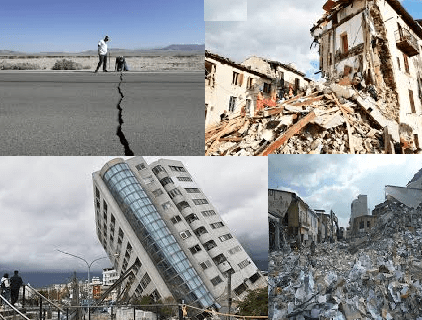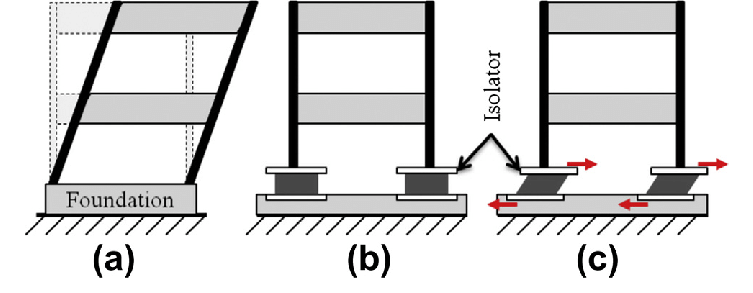
Natural disasters have adversely affected civilisations since ancient times. With advancements in technologies, we have learnt to mitigate its impacts on lives and properties.
Earthquake is defined as a sudden ground shaking caused by the release of huge stored strain energy due to relative movements of the tectonic plates
Earthquake Resistant Construction is the fabrication of the building or a structure such that it may withstand the earthquakes.
Ground vibrations during earthquakes cause inertia forces at locations of mass in the structure. These forces travel through the roof /floors and walls to the foundation. We should ensure that these forces reach the ground without causing any major damage or collapse.
Characteristics features of Earthquake Resistant Construction Techniques
- Helps in creating a flexible foundation to lift the building foundation above the earth.
- It helps in shielding the building from the vibrations.
- It also multiplies the safety strategies so that it can’t collapse.
- The materials which are used in earthquake-proof buildings minimise the chances of collapsing of buildings.
Pre Earthquake Resistant Construction Methods or Techniques
Basic techniques of the Earthquake Resistant Construction are as follows:
- Base Isolation
- Energy dissipation devices
Base Isolation devices
- These are the devices which are used to resist the earthquake to a greater extent.
- These devices help in separating the buildings from the building foundation by bearing pads.
- These are usually made from the Lead rubber Bearings, Spherical Sliding Isolation Systems.
- These are the devices which are supported by a series of bearing pads and these are placed between the building and building’s foundation.
- The shaking is reduced by the 5 times due to this technique.
- In the case of an earthquake, the base-isolated building rocks back and forth like a boat to resist the seismic earthquakes.

Associated Article: Base Isolation System
Energy dissipation devices
- These are the devices which are also termed as Seismic Dampers.
- These are the special devices which are introduced in the building and they absorb the energy produced that is produced by the seismic waves.
- They are of different types like the Viscous Dampers, Friction Dampers, and Metallic Dampers etc.
- A viscous damper works effectively and utilizes the forced movement of the fluids within the damper.
- A friction damper works efficiently and it utilizes the frictional energy to dissipate energy.
- A metallic damper also utilizes the deformation of metal elements within the damper and helps in resisting seismic forces.
Post Earthquake Resistant Construction Methods or Techniques
Basic techniques of the Post Earthquake Resistant Construction are as follows:
- In rural areas, there is a need for using better engineering information to achieve more durability.
- The innovative concepts should be used like we should use the concrete blocks, cement, wooden blocks and the tiles to resist the earthquake up to a certain extent.
- The construction should be according to the standard codes and techniques.
- The structure should be properly reinforced.
- The lives of the people should be least affected due to pre-earthquake resistant techniques.
- The waste products should be utilized from the industries for the post-construction and the agricultural waste can be utilized in this context in the phase of the reconstruction.
Advantages in Long term of Earthquake Resistant Construction Techniques
- The earthquake-resistant buildings can also tolerate the shocks and the vibrations which occur due to the seismic forces.
- Earthquake Resistant Construction helps in reducing the number of structural damages.
- These techniques are helpful to resist other natural disasters.
General Earthquake Resistant Construction Techniques
- The codes and the standards related to the earthquake-resistant construction should be followed to avoid this disaster up to a certain extent.
- We must avoid irregular shaped structures and framing system during the construction.
- We should use the best quality of construction materials.
- Proper workmanship must be ensured.
- We should also introduce the shear walls to transfer seismic loads to the bottom of the foundation so that they can resist the seismic forces.
- The Horizontal bands should be provided at plinth, lintel and roof levels as per IS codes
- The vertical reinforcement should be provided at important locations such as corners, internal and external wall junctions as per code.
The earthquakes do not kill the people but it is the unsafe structures which are responsible for the devastation. So, we should build earthquake resistant structures and keep societies safe.
Also Read: